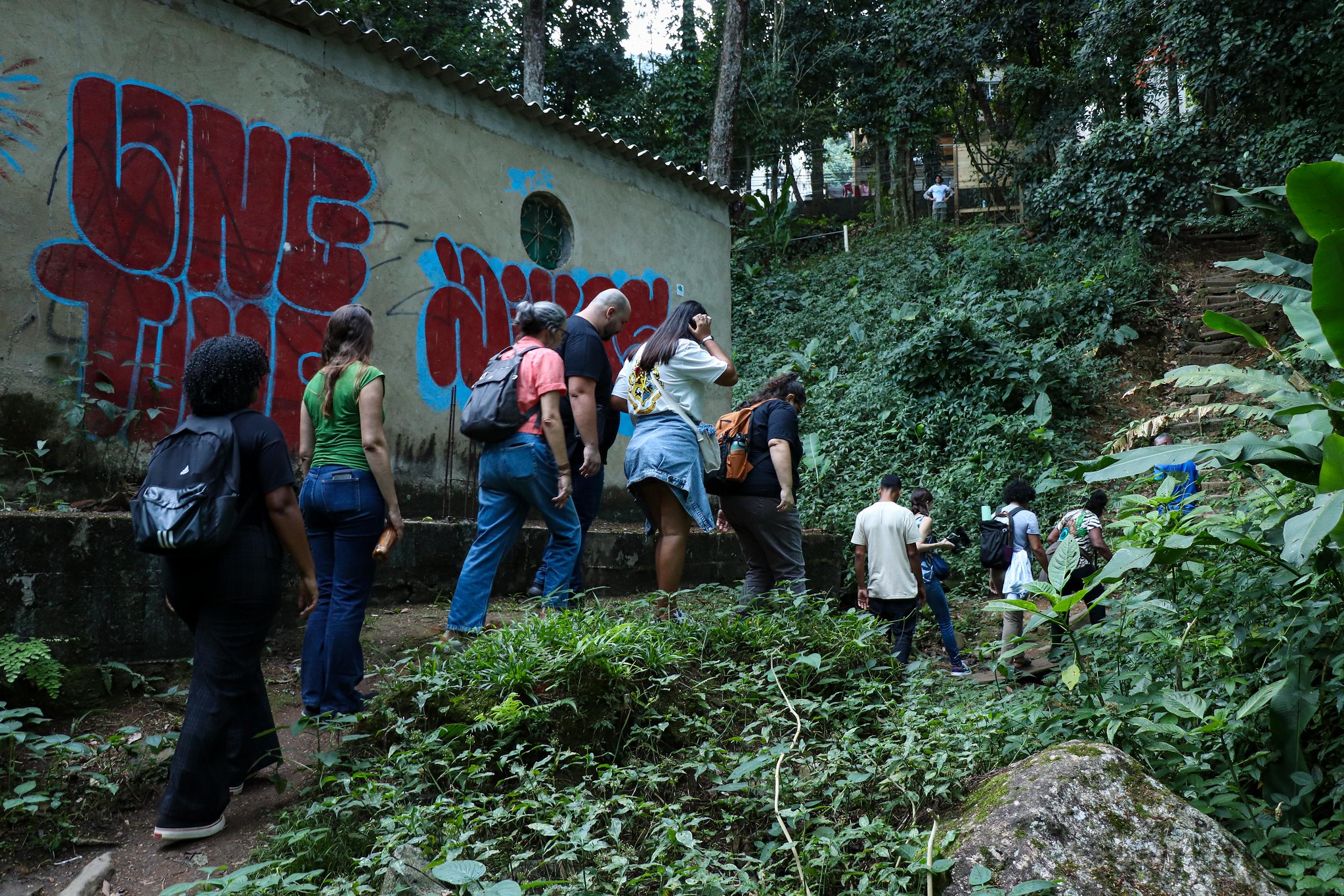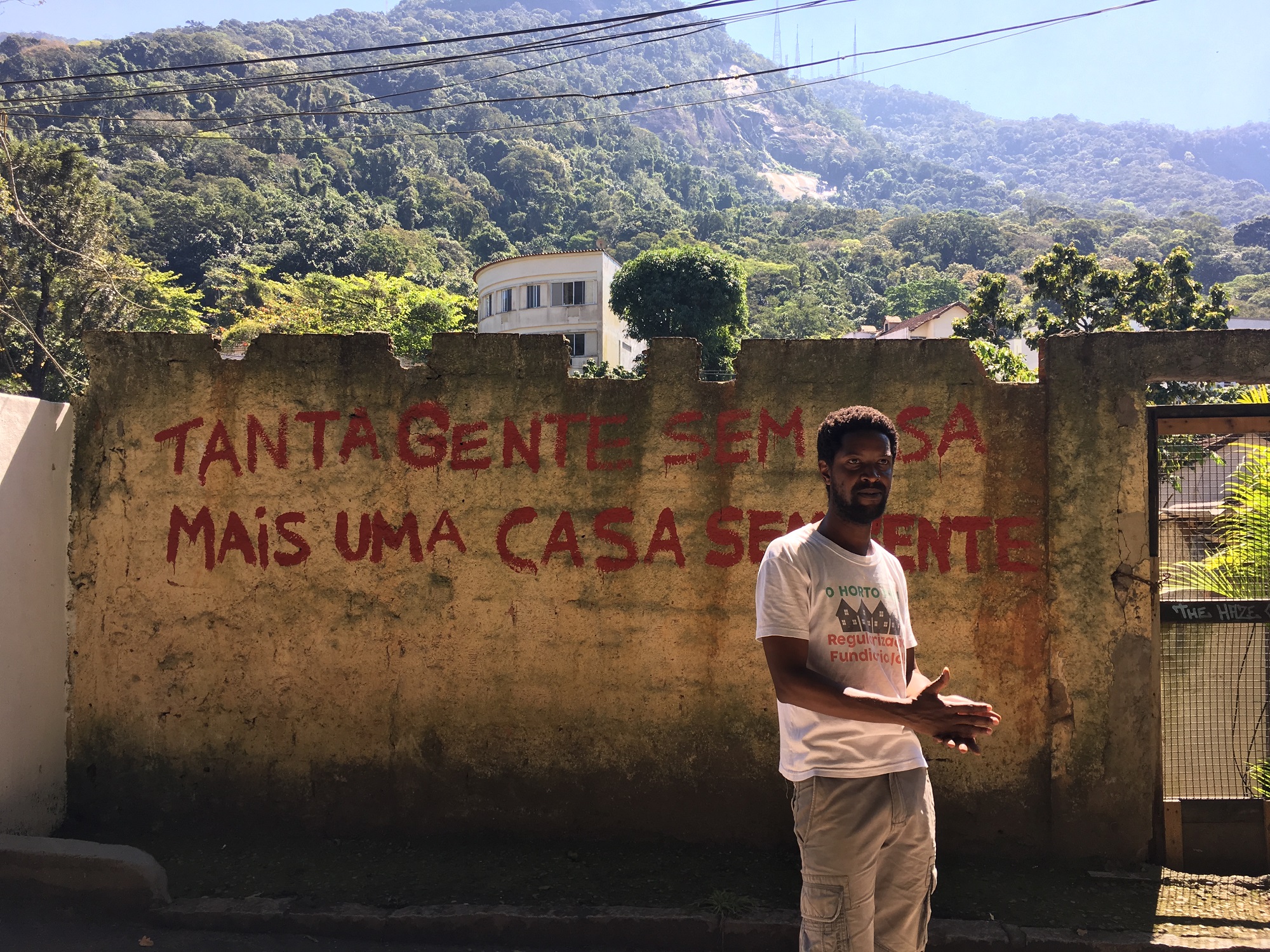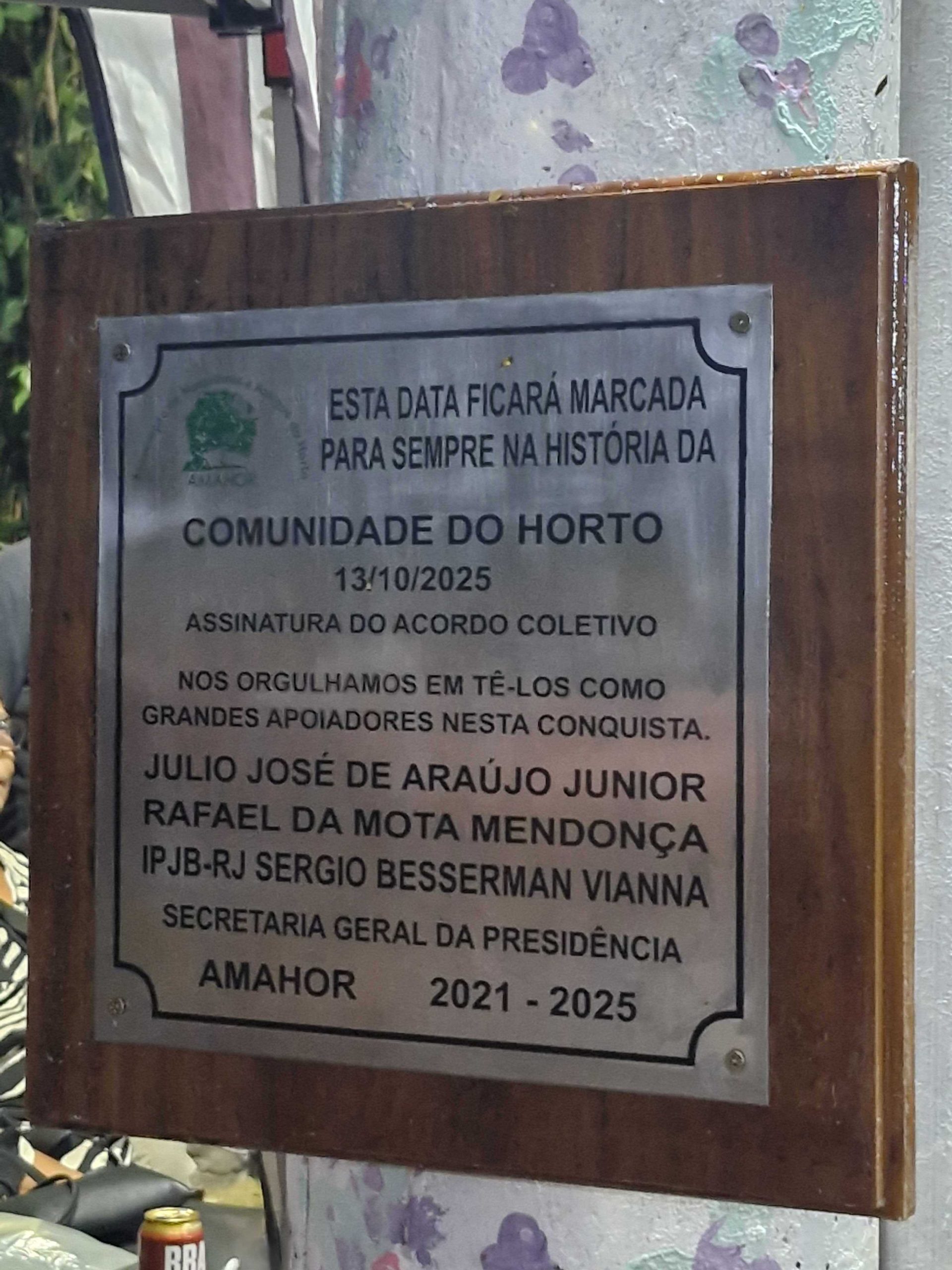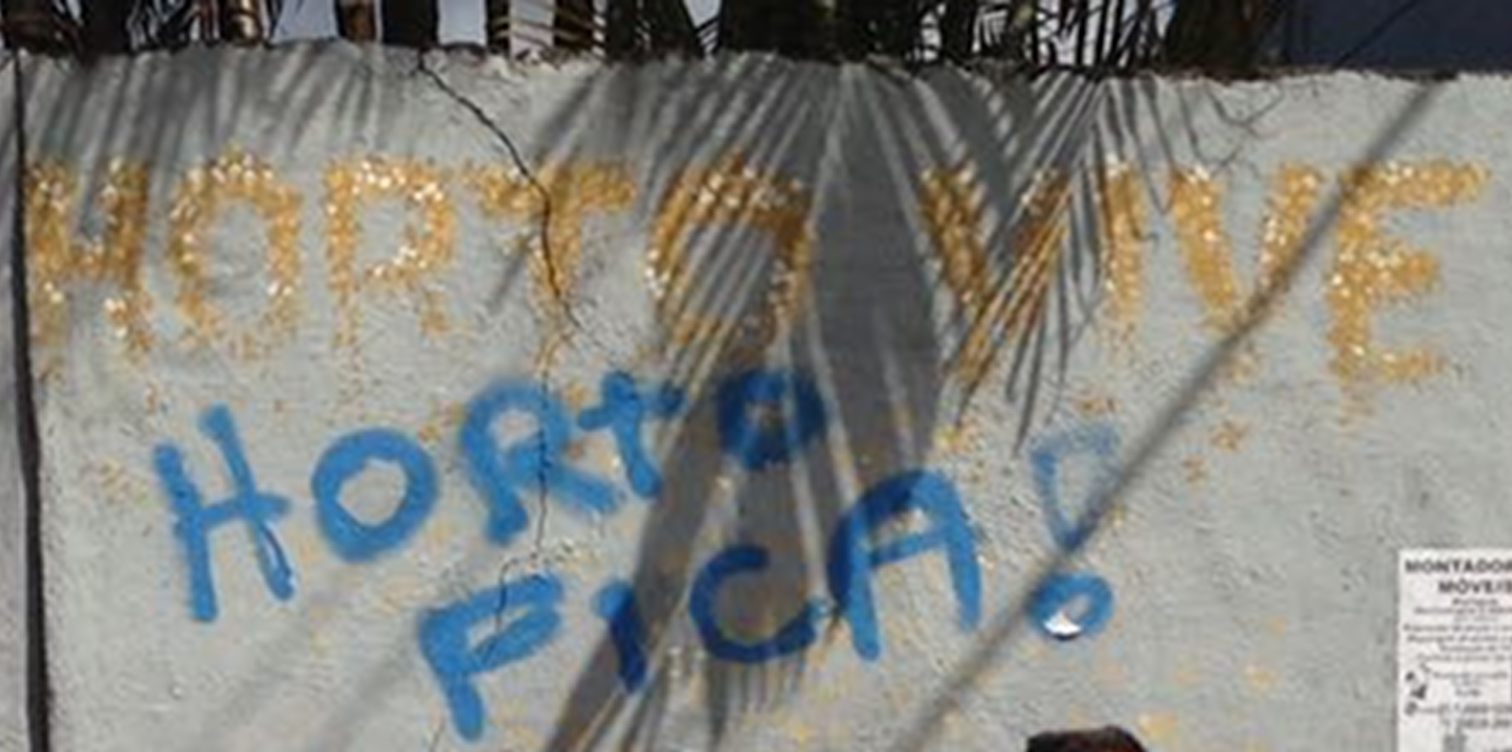October 13, 2025 will go down in the history of Gardenin Rio de Janeiro’s South Zone as the day when the community signed a historic agreement that ends the threat of forced eviction that haunted residents for four decades. In a moment of collective celebration, the feeling of victory after so many years of struggle was sealed in song: the famous battle cry “Horto will stay!” became “Horto stayed!”
The president of the Horto Residents and Friends Association (HOURS), Fábio Dutra, sums up the signing of the agreement in three words: exhaustion, pride and relief. For him, the agreement marks a turning point in the community’s struggle for the right to housing.
“We’ve lifted a sword from over our heads… We went into this battle at a disadvantage and are coming out with the situation in our favor. Today, our right is recognized by the Botanical Gardens Institute itself.” — Fábio Dutra

Rafael Mendonça, the attorney representing Horto families in lawsuits over repossession orders, describes the importance of this achievement:
“The agreement signed on October 13 was historic because it represents an acknowledgment by all the government agencies involved… that the residents of the Horto community have the right to live there. It was a historic moment of institutional recognition of the right to housing by these actors.”
Emília de Souza, resident and co-founder of the Horto Museumalso celebrated the milestone represented by the collective agreement:
“The community can now feel at ease, without this constant fear of the courts moving forward with repossession orders.”
History and Struggle of the Horto Community
Located in the Botanical garden neighborhood, home to the city’s Botanical Gardens, the Horto community is over 200 years old. Its origins date back to the founding of the Botanical Gardens Research Institute in the early 19th century. The institute provided houses to its employees to ensure they lived nearby and also offered financial support and materials for building new homes.
Today, the community is home to 621 families. Many of them are descendants of former Botanical Gardens employees who built their homes with the park’s support and still display a strong environmental vocation. It is an area predominantly inhabited by Blacklow-income residents, a demographic profile that stands in sharp contrast to that of Jardim Botânico, the upscale surrounding neighborhood. Despite extensive documentation proving a two-century-long history of occupation, the families’ land tenure has never been properly regularized.

The relationship between the community and the Botanical Gardens was, for the most part, harmonious. However, since the 1980sthe Horto community has faced forced eviction threats. At the time, the federal government—which owned the land—filed hundreds of lawsuits ordering the removal of families from the area. Pressure on the community intensified in 2018, after the Botanical Gardens gained ownership of the land and filed a new wave of lawsuits targeting nearly all families. The alleged reasons for eviction include irregular land occupation and environmental damage. However, residents have long suspected other motivations, tied to the high economic value of the community’s land—estimated at around R$10 billion (~US$1.87 billion)—and pressure from affluent neighbors.
Residents of the Horto community lived under the threat of forced eviction for 40 years. During this period, they were subjected to various acts of violenceincluding the use of police force in attempts to remove them. In addition to the ongoing lawsuits, part of the mainstream media constructed a narrative criminalizing the communitylabeling them as invaders and echoing pro-eviction rhetoric. Since the beginning of the conflict, a total of five families were removed.

‘The Fight for Our Rights Is Legitimate’
This somber chapter in the community’s history came to an end in 2025 with the signing of a collective agreement that guarantees, among other things, the families’ right to remain on the land. The agreement involved the participation of the Botanical Gardens Research Institute, the Horto Residents and Friends Association, the Federal Public Prosecutor’s Office (MPF), the General Secretariat of the Presidencythe Federal Public Defenders’ Office, the National Institute of Historic and Artistic Heritage (IPHAN), and the Rio de Janeiro City Hall, in a ceremony held on October 13 at the Solar da Imperatriz in the Jardim Botânico neighborhood. The successful coordination among this diverse set of actors was the result of a collective effort by community leaders and authorities committed to the community’s fight for the right to housing.
This collective agreement will serve as the basis for individual agreements to be signed by each family. The Botanical Gardens will remain the landowner but has committed to allowing the Horto community to stay in place. The residents, in turn, have agreed to prevent the community from expanding and to comply with rules aimed at environmental preservation.

Despite this historic achievement, there are reasons for the community to feel uneasy. One concern raised by residents is the potential gentrification of the area. This issue came up during negotiations, which ultimately prohibited the sale of properties within the community. Homes can be passed on to residents’ descendants—ensuring the continuity of the community—but cannot be sold or leased to outsiders.
“Around here, really close to us, we see gentrification [going on]. Where there used to be houses, there are now restaurants that people here can’t afford… This process of gentrification could reach us. We have to understand that if we fought for over 40 years to keep living here, anything different than that makes no sense. It would be very hypocritical to fight so hard to want to sell now.” — Fábio Dutra
Horto’s example shows that, in Brazil, the right to housing is won through struggle. Without the keys to resistance—community engagement and unity, and collaboration with partners across different spheres—this victory would not have been possible.
“We’ve set an example for social movements that the fight is worth it. Without struggle, there is no victory. The fight for our rights is legitimate.” — Emília de Souza
October 13, 2025, will go down in history as the day Horto stayed. It marks the end of a long period of fear of forced evictions and the beginning of a new chapter toward the community’s regularization and permanence. Horto’s case shows the power of collective struggle in securing a community’s rights. Without broad resistance and solidarity, none of this would have been possible. It also shows that reconciling the right to housing with environmental preservation is possible, making Horto an example for so many other communities fighting for their right to remain. As Dutra, president of the residents’ association, put it: “They wanted to bury us, but they didn’t know we were seeds!”


